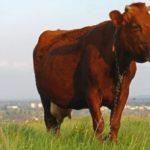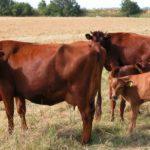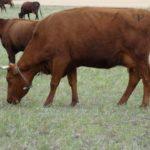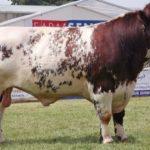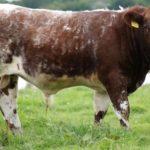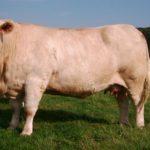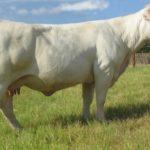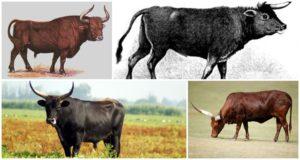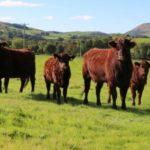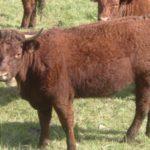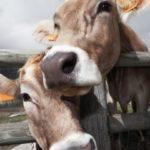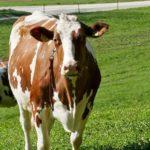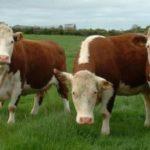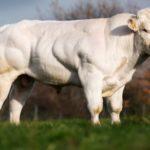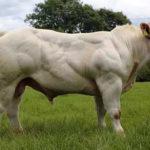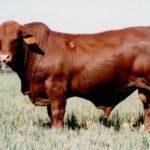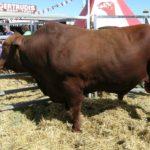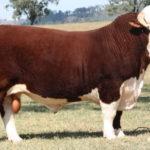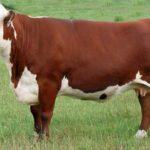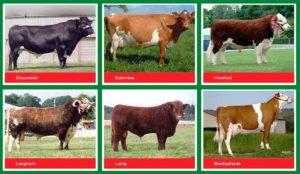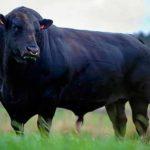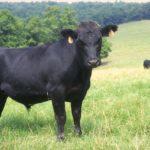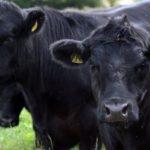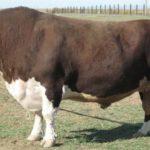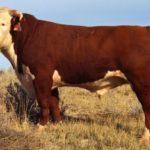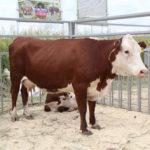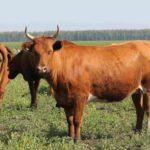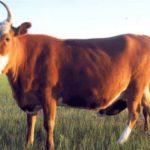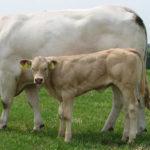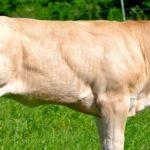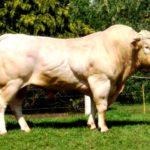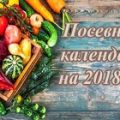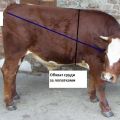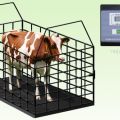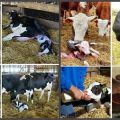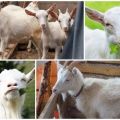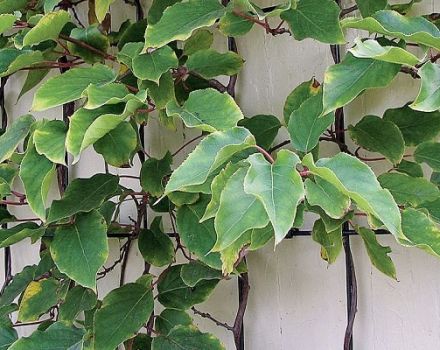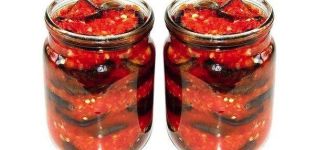Descriptions and characteristics of the top 12 beef breeds of cows, where they are bred and how to choose
Beef cows have been actively raised since the 18th century, their popularity is growing every year, since quality beef is invariably in demand. Mainly large farms are engaged in breeding of beef cattle breeds, it is more profitable for small private owners to keep beef and dairy cattle. The profitability of the business is high, if you provide the animals with proper care, keep them in proper conditions.
Features of the meat direction
When choosing beef cattle, you need to take into account the characteristics of the breed, due to its purpose and the degree of productivity. Meat cattle are divided into 3 categories:
- Intensively developing calves. Immediately after birth, they begin to quickly gain body weight. With the introduction of concentrated complementary foods, weight gain is dramatically accelerated. Animals are demanding in terms of keeping conditions. Their meat is of excellent quality.
- Slowly developing. The animals are not capricious in keeping, they are distinguished by excellent health, they survive on pasture. The business does not require significant investments. Diet meat, contains a minimum of fat.
- A mixed category that appeared when crossing African and European breeds. Animals are unpretentious, adapted to hot weather. The cow becomes sexually mature quickly.
Meat cows differ from their dairy relatives in massive build, significant muscle mass, and significantly lower milk yield. There is enough milk from a mother cow just to feed a calf, although some breeds provide not only high-quality meat, but also milk.
Meat cattle are intensively fed according to a certain scheme. A newborn calf weighs 30-35 kg and its free-range weight grows rapidly. Calves 18-20 months of age are slaughtered, 3 months before that they are transferred to stall keeping and intensive feeding. Slaughter yield of early maturing breeds reaches 55%, and in the most well-fed bulls - 60-65%.
Most popular breeds
There are a large number of meat breeds of cattle in the world, choosing the right one is problematic, since the productivity of all is approximately the same. When choosing, you should focus on the peculiarities of keeping animals, breed advantages and disadvantages, your financial capabilities.
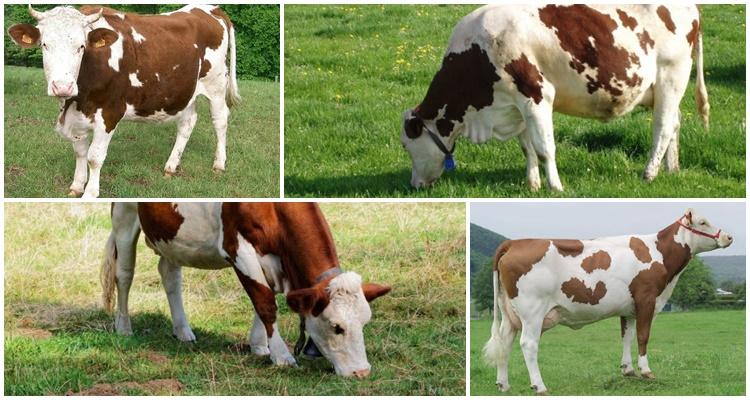
In the world
Western European breeders have been the most successful in breeding meat breeds. Each breed is tailored to the breeders' requirements and consumer preferences. So, British cows are early maturing, French are muscular and late maturing, their meat is low in fat.
Estonian red
The breed appeared at the end of the 19th century, when the Estonian cattle were crossed with German animals, and the resulting offspring were mated with Danish cows. Estonian cattle have a stocky build, bulls weigh up to 900 kg, cows weigh 500-600 kg. The coat is red-brown or light red.
Shorthorn
A hybrid obtained by crossing British, Dutch and Scottish breeds. The cows are beautiful, stately, with harmonious muscles, red coat. A bull weighs up to 1000 kg, a cow weighs up to 500 kg.
In Russian farms, the Shorthorn cow did not take root because of its picky about feeding and keeping conditions, sensitivity to unfavorable climatic conditions.
Charolais
French breed that gives dietary meat with a low percentage of fat. Representatives of the breed are used as draft animals, but the quality of their meat does not deteriorate from many years of physical stress. A bull reaches up to 2000 kg, a cow - up to 800 kg. The body is heavy, massive, the muscles bulge out on the chest, shoulders, hips. The color is white and yellowish.
Salers
The meat breed was developed in the 19th century in the mountainous French village of Salers. Initially, cows were dairy, their milk was used to make the famous cheese of the same name. But animals were also used as a pulling force, which affected their muscle strength. An adult bull reaches 1500 kg, reaches up to 2 m at the withers. A cow gives up to 60 liters of milk per day.
British
Representatives of the British breed are adapted to the harsh climate, their body is covered with black and white wool 20 cm long with a dense undercoat. A bull weighs 800-900 kg, a cow weighs 500 kg. The annual milk yield is not more than 1500 liters, but milk has a high fat content - up to 4%.
Due to the ability to adapt to any climatic conditions, to endure temperature fluctuations, British meat bulls are bred in tropical countries and in Russia.
Belgian blue
A meat breed with a body so muscular it looks unnatural. Fatty tissue under the skin is almost not formed, so animals can be continuously kept on intensive fattening. A bull eats up to 1300 kg of weight, a cow - up to 900 kg. The color is white, light blue, black-blue or black.
Santa gertrude
A meat breed created by crossing Shorthorn individuals and Indian zebu.The second progenitor influenced the structure of the cow's body: she has a convex withers, a wide body. A bull weighs up to 1000 kg, a cow weighs up to 600 kg.
Grown in Russia
Russian farmers choose the best beef cattle breeds for breeding, adapted to harsh climatic conditions, giving a high meat gain even when fed on cheap feed. These breeds include the world's best British Hereford, and unpretentious Kazakh and Kalmyk cows are also popular in Russia.
Hereford
- Gerefodskaya korova, Gereforodskaya korova, Meryodskaya korova species, Gerefovodskaya species
The most common beef breed. The coat is thick and lengthens by several centimeters in cold months. Animals are undersized, with a barrel-shaped body, males weigh up to 1000 kg, females - up to 600 kg. The color is solid red or with white spots.
Aberdeen Angus
Scottish beef breed created by breeding hornless local animals. Slaughter weight turns out to be high, since the representatives of the breed have a thin skeleton, making up no more than 18% of the body weight. Adult bulls weigh up to 900-950 kg.
A serious drawback is the ferocity and uncontrollability of adult bulls, the ability to attack people and other animals.
Kazakh white-headed
The meat breed is obtained by crossing Hereford and Kazakh animals. Cows are distinguished by a barrel-shaped constitution, a straight back, a strong skeleton.
Representatives of the Kazakh breed are divided into meat and meat and dairy. The latter give milk of good quality.
Kalmyk
Kalmyk meat cows are adapted to harsh climatic conditions, do not suffer from frost and winds, they have enough food on scarce pastures. Animals are active, hardy, not afraid of long transitions, while not losing body weight. They have a strong skeleton, red coat with a dense undercoat. A bull weighs up to 1000 kg, a cow - 550-600 kg. Annual milk yield does not exceed 1200 liters.
Aquitaine light
A young French breed with a harmonious physique and well-developed muscles. The coat is yellowish or light brown. A bull eats off up to 1300 kg, a cow - up to 900-950 kg.
Selection rules
Meat representatives of cattle are bought for fattening at 6 months of age.The animal must be active, moving normally.The body of a healthy beef cow is elongated, massive, angular, with convex muscles, a wide pelvis, and a voluminous and protruding chest. A narrow chest is a sign of defects in the respiratory and circulatory organs.
The head is large, heavy, the neck is short, sinewy, strong. The eyes should not be inflamed, covered with a film, profusely watery, with a blurred look. The limbs are short, strong, widely spaced. The udder is medium in size and should not sag.
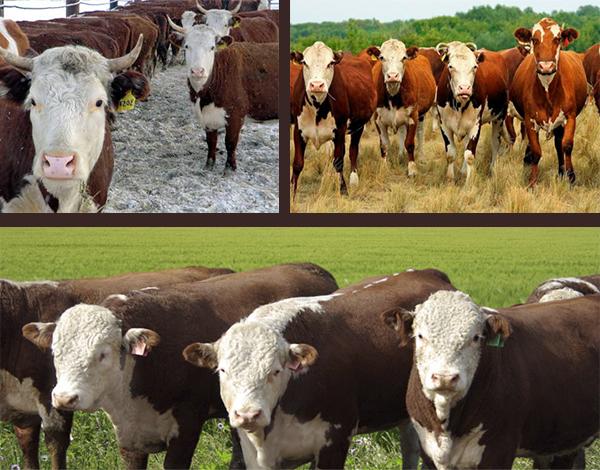
Subtleties of maintenance and care
Meat cows are generally bred in the same way as dairy cows. There are minor nuances of the content:
- The basis of food is pasture. It cannot be limited, it provides the main body weight growth. Otherwise, you will have to use food additives.
- A young individual requires at least 2 m2 stalls, for an adult beef bull - from 10 m2.
- The barn must be ventilated. The optimum temperature is from +5 to +18 ° C.
- In summer, they use grazing; in the heat, animals are kept under a canopy. In winter, the cows are in the barn.
- The diet of beef cows includes grass, hay, silage, root crops, concentrated feed, mineral supplements. The grain is given steamed.
- From 10 months of age, cattle are transferred to stall growing to increase the weight. Walking time is reduced to 4 hours. Reduce the amount of succulent grass, increase the portion of hay.
Meat bulls can be aggressive, this must be taken into account when buying them for a small private farm. To fatten an animal, it will have to be kept on the leash, which can negatively affect the quality of the meat.
